Camera shots are the building blocks of visual storytelling, guiding the audience’s focus through composition, angles, and movement. This guide explores their role, enhancing narrative impact effectively.
1.1 Importance of Camera Shots in Filmmaking
Camera shots are fundamental to filmmaking, as they dictate the visual language and emotional tone of a scene. By controlling what the audience sees, shots guide focus, evoke emotions, and establish context. Different shot types create intimacy or grandeur, shaping the narrative’s impact. They also set pacing and rhythm, influencing how the story unfolds. Whether it’s a close-up capturing raw emotion or a wide shot revealing expansive settings, each shot serves a purpose. Proper use of camera shots enhances storytelling, engages viewers, and conveys themes effectively. This guide explains how filmmakers leverage these tools to craft compelling visual narratives, ensuring each frame communicates meaning and draws the audience deeper into the story.
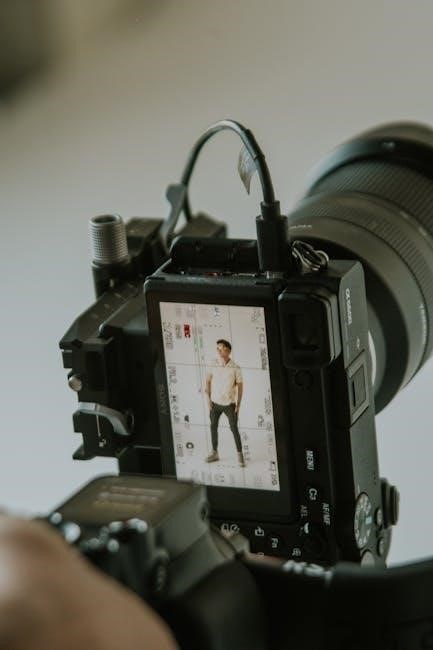
1.2 Brief Overview of Common Shot Types
Common camera shots include long shots, medium shots, close-ups, and extreme close-ups, each varying in subject framing to serve different narrative purposes. Long shots establish settings, medium shots capture group interactions, close-ups focus on emotions, and extreme close-ups highlight details. Framing techniques like the rule of thirds and leading lines guide viewer attention, while depth of field separates subjects from backgrounds. Camera movements such as tracking, panning, and tilting add dynamic elements, and crane shots provide dramatic perspectives. The balanced use of these shot types and techniques enhances storytelling by controlling the audience’s focus and emotional engagement, ensuring a visually compelling and cohesive narrative experience.
Types of Camera Shots
Camera shots vary by size and framing, guiding viewer focus and enhancing storytelling through composition and technique to create visual and emotional impact in filmmaking.

2.1 Shot Sizes: Long Shot, Medium Shot, Close-Up, and Extreme Close-Up
Shot sizes define how much of the subject is framed within the camera’s view. A long shot captures the subject from a distance, often showing the environment. A medium shot frames the subject from the waist up, balancing detail and context. Close-ups focus tightly on the subject’s face or object, emphasizing emotions or details. Extreme close-ups isolate specific features, like eyes or small objects, intensifying visual impact. These sizes guide audience focus, helping to convey narrative and emotional depth in film and video production effectively.
2.2 Framing Techniques: Rule of Thirds, Leading Lines, and Depth of Field
Framing techniques are essential for composing visually appealing and meaningful shots. The Rule of Thirds divides the frame into a 3×3 grid, placing subjects at intersections for balanced composition. Leading Lines guide the viewer’s eye through the scene, using elements like roads or patterns to direct focus. Depth of Field controls what is sharp or blurred, isolating subjects or emphasizing environments. These techniques enhance storytelling by directing attention, creating depth, and evoking mood. Proper framing ensures the audience engages with the intended elements, making each shot purposeful and impactful in film and video production.

Camera Angles and Their Effects

Camera angles influence the emotional tone and narrative perspective, guiding the audience’s perception through low-angle, high-angle, and eye-level shots, each evoking distinct moods and emphasis in storytelling.
3.1 Low-Angle, High-Angle, and Eye-Level Shots
Low-angle shots, framing subjects from below, emphasize power and heroism, while high-angle shots, taken from above, can convey vulnerability or overwhelm. Eye-level shots establish equality, mirroring the audience’s perspective for relatability. These angles subtly alter the emotional weight of scenes, influencing how viewers perceive characters and their situations. By strategically choosing angles, filmmakers guide the audience’s emotional response, enhancing the story’s depth and impact without overt manipulation. Understanding these techniques allows creators to craft scenes that resonate deeply, ensuring each shot contributes meaningfully to the narrative.
3.2 Dutch Angle and Point of View Shots
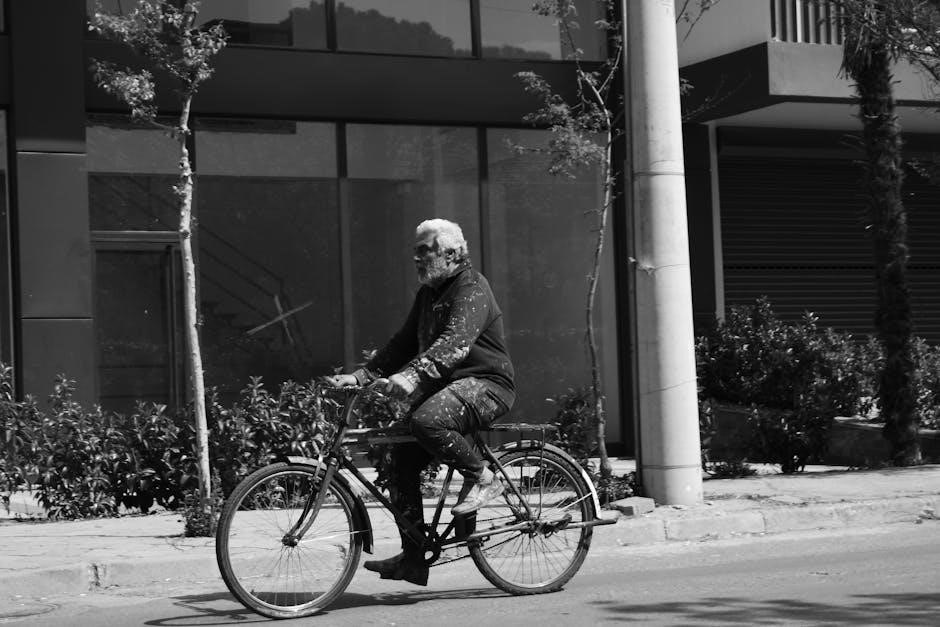
A Dutch angle, also known as a tilted shot, creates a sense of unease or disorientation by tilting the camera to one side. This technique adds emotional tension and visual interest, often used to reflect a character’s instability or surreal situations. Point of View (POV) shots, on the other hand, show what a character is seeing, immersing the audience in their perspective. These shots enhance empathy and engagement, making viewers feel like active participants in the scene. Both techniques are powerful tools in storytelling, allowing filmmakers to evoke specific emotions and deepen the audience’s connection to the narrative.

Camera Movements
Camera movements enhance storytelling by adding depth and emotion. Tracking shots follow subjects, while panning and tilting shift focus. Crane shots provide dramatic elevation, and dynamic framing keeps scenes engaging, guiding viewer attention effectively always;
4.1 Tracking, Panning, and Tilting Movements
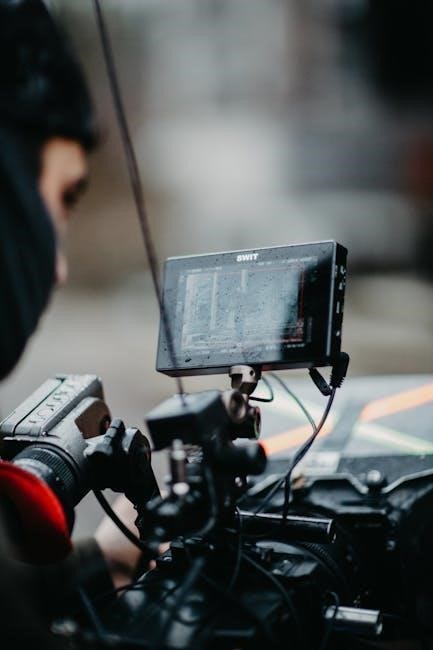
Tracking shots involve moving the camera alongside a subject, maintaining focus while adding dynamic energy to scenes. Panning and tilting movements shift the camera’s view horizontally or vertically, guiding the audience’s attention. These techniques enhance storytelling by emphasizing key elements, creating fluid transitions, and adding emotional depth. Tracking shots can follow characters, vehicles, or objects, while panning and tilting are often used to reveal environments or highlight specific details. Proper execution ensures smooth, jerk-free motion, allowing the viewer to remain fully engaged with the narrative. These movements are essential tools in cinematography, offering directors creative control over visual pacing and audience perspective, ensuring impactful storytelling always.
4.2 Crane Shots and Dynamic Framing
Crane shots involve moving the camera vertically, often to capture dramatic aerial views or emphasize scale. These shots can elevate the emotional impact by revealing expansive environments or highlighting a character’s isolation. Dynamic framing refers to the active composition of scenes, where elements within the frame guide the viewer’s attention. This technique uses movement, depth, and focal points to create visually engaging storytelling. Crane shots often transition from close-ups to wide shots, or vice versa, while dynamic framing ensures every element in the scene contributes to the narrative. Together, these techniques enhance visual storytelling, providing directors with powerful tools to captivate audiences and convey complex emotions effectively through cinematic artistry.
The Emotional Impact of Camera Shots
Camera shots create mood, tension, and emotional depth, guiding the audience’s connection to the story. This guide explains how shot selection and framing evoke feelings, enhancing storytelling.

5.1 How Shot Selection Influences Audience Perception
Shot selection plays a pivotal role in shaping audience perception by guiding emotional engagement and narrative interpretation. Framing techniques, such as the rule of thirds and leading lines, direct viewers’ attention to key elements, emphasizing certain details over others. Close-ups create intimacy, while wide shots establish context, influencing how the audience connects with characters and environments. Camera movements, like tracking shots, add dynamism, immersing viewers in the scene. The choice of shot size and angle subtly manipulates tension, mood, and perspective, ensuring the audience experiences the story as intended. This deliberate craftsmanship enhances storytelling, making shot selection a powerful tool in filmmaking. Effective use ensures a deeper emotional and intellectual connection with the audience.
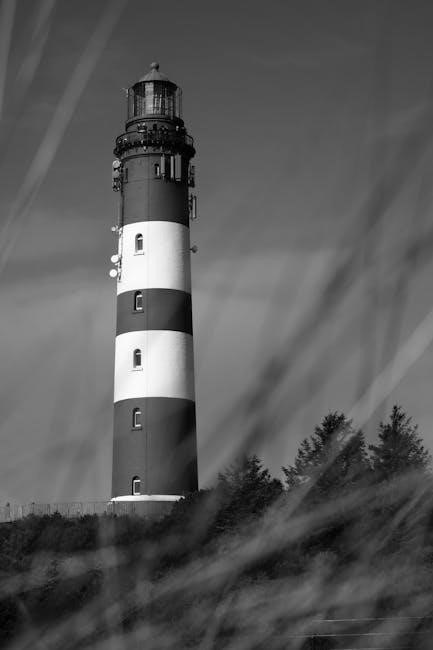
5.2 Using Camera Angles to Convey Mood and Tone
Camera angles are essential tools for establishing mood and tone in filmmaking. Low-angle shots can create a sense of power or heroism, while high-angle shots often evoke vulnerability or sadness. Dutch angles, with their tilted perspective, can induce a sense of unease or disorientation, enhancing tension. Eye-level shots promote a neutral, realistic tone, making scenes feel natural and relatable. By carefully selecting angles, filmmakers guide the audience’s emotional response, shaping the overall mood of a scene. These techniques, combined with lighting and composition, ensure that the visual language aligns with the intended narrative tone, creating a lasting impression on viewers.
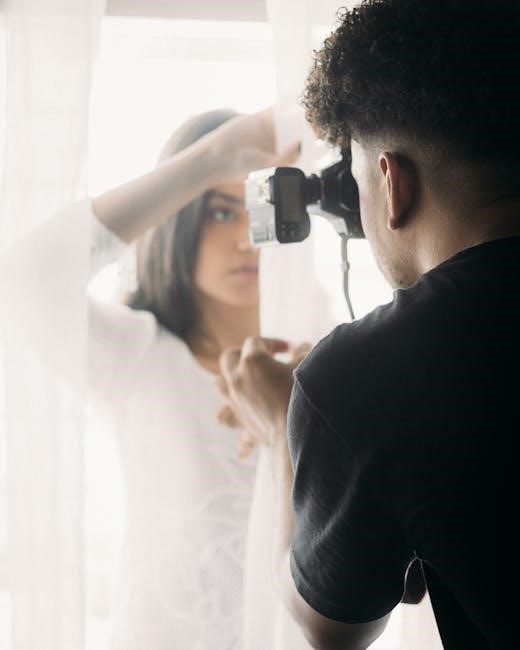
No Responses